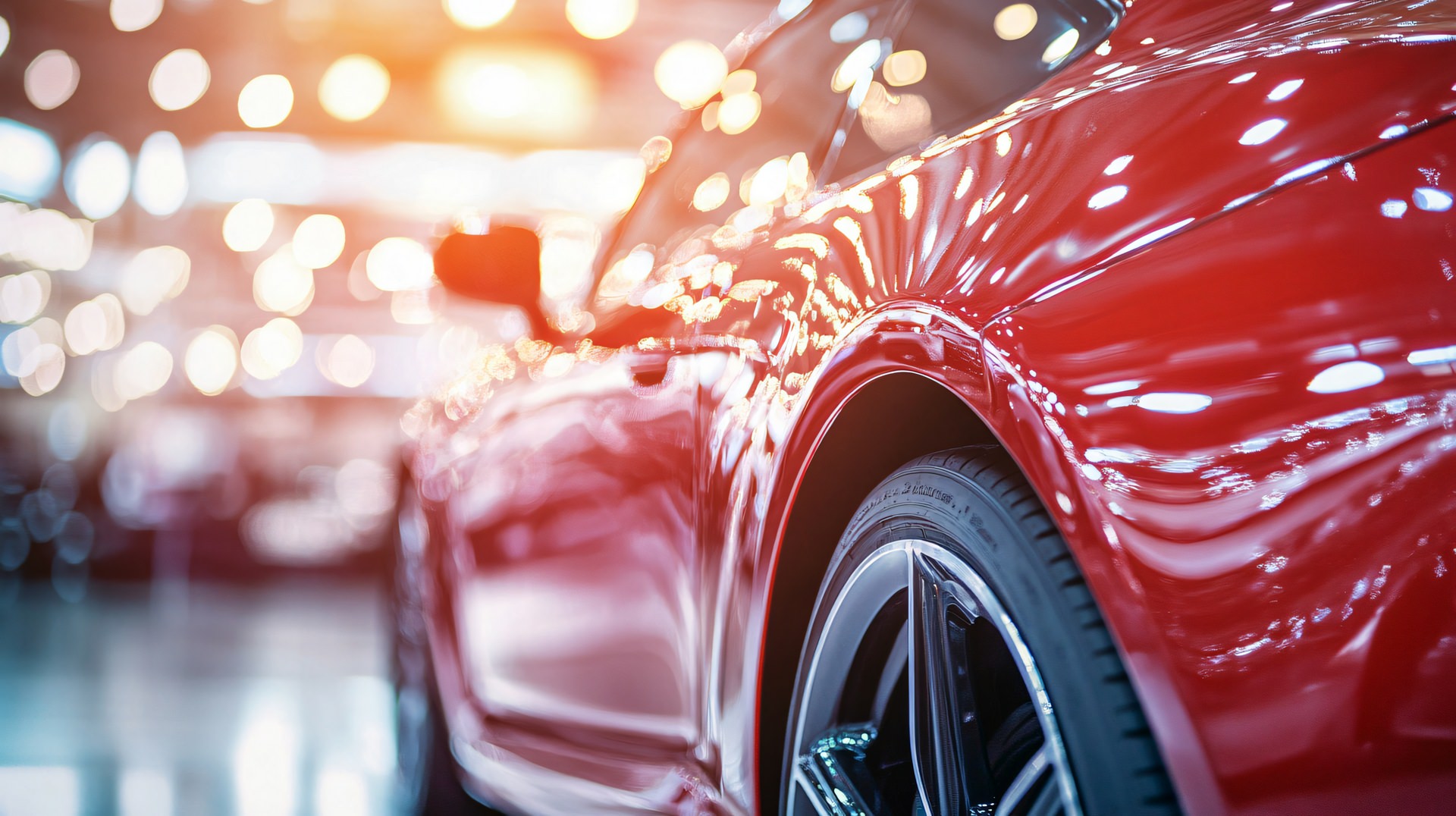Advanced technologies to prevent body fading
UV light triggers photochemical reactions that degrade paint polymers.
Photodegradation and Photooxidation
Automotive paint is composed mainly of organic polymers, pigments and additives. Exposure to UV light, particularly in the UV-A (320-400 nm) and UV-B (280-320 nm) range, provides sufficient energy to break chemical bonds in polymers through photodegradation processes. This leads to the formation of free radicals, which trigger photooxidation chain reactions. The consequence is the cleavage of polymer chains, resulting in loss of cohesion, elasticity and adhesion of the paint film.
Effects on Pigments and Fading of Colors
Organic pigments can undergo structural changes under the influence of UV light, causing color changes and fading. Inorganic pigments, although more stable, can be affected indirectly through degradation of the polymer binder. In addition, the interaction of UV rays with moisture and atmospheric oxygen can accelerate the formation of oxidative products that further alter the appearance of the paint.

Incorporating UV absorbers and stabilizers into paint formulations is a well-established practice.
UV Ray Absorbers (UVAs) and Hindered Amine Light Stabilizers (HALSs)
UVAs, such as benzotriazoles and benzophenones, work by absorbing UV radiation and dissipating the energy in the form of harmless heat, preventing the excitation of polymer molecules. HALS, on the other hand, do not absorb UV rays but neutralize the free radicals formed, interrupting photooxidation chain reactions.
Limitations of Traditional Additives
Although effective, UVA and HALS additives can migrate to the surface over time, decreasing their concentration in the paint film and reducing their protective effectiveness. In addition, prolonged exposure to severe environmental conditions can exceed the protective capacity of these additives, necessitating the application of additional treatments.
Innovation in the field of nanostructured materials has led to the development of more effective protection systems.
Zinc Oxide (ZnO) and Titanium Dioxide (TiO₂) Nanoparticles.
ZnO and TiO₂ nanoparticles are used as UV shielding due to their ability to absorb and scatter UV rays. The nanometer size increases the specific surface area, improving the protective effectiveness. However, these nanoparticles can catalyze undesirable photocatalytic reactions if not properly treated, leading to degradation of the surrounding polymer.
Nanostructured ceramic coatings
Ceramic coatings based on polysilazanes and silane-modified compounds form a three-dimensional network on the surface of the coating, creating a highly UV- and chemical-resistant protective layer. These coatings exhibit high hardness (up to 9H on the pencil scale) and hydrophobic properties, reducing the adhesion of contaminants and facilitating maintenance.
Benefits and technical considerations
Advanced coatings offer superior, long-lasting protection, but require careful surface preparation and professional application to ensure optimal adhesion and effectiveness. Controlled curing and the application environment significantly influence the final performance of the coating.
Chemical compatibility between existing paint and shielding products is crucial.
Molecular adhesion and chemical bonds
To achieve effective protection, shielding products must form stable chemical bonds with the paint surface. This involves interactions such as covalent bonds, Van der Waals forces and hydrogen bonds. The presence of reactive functional groups on the paint surface, such as hydroxyl or carboxyl groups, promotes the formation of these bonds.
Effects of the polymer structure of the paint
Paints based on polyurethane, polyester and acrylics have different reactivities and chemical resistances. The choice of shielding product must take into account the polymer structure to avoid incompatibilities that could lead to phenomena such as peeling, cracking or color alteration.
Surface modification methods.
In some cases, it may be necessary to modify the paint surface through the application of specific primers to improve the adhesion of the shielding product and optimize UV protection.
Proper maintenance is essential to preserve the effectiveness of shielding products over time.
Factors affecting durability
The durability of protective systems is affected by environmental factors such as UV intensity, temperature, humidity, and exposure to harsh chemicals. Mechanical stresses, such as abrasion from improper washing, can also degrade the protective layer.
Recommended maintenance procedures
Non-aggressive washing: use pH-neutral detergents and washing techniques that minimize friction on the surface.
Periodic application of protective reinforcements: the use of sealant sprays or specific top coats can renew the hydrophobic and shielding properties of the coating.
Regular inspections: periodically check the integrity of the coating through wettability tests (contact angle) and visual observations to detect early signs of degradation.
Economic and environmental aspects.
Investing in high-quality shielding products and proper maintenance may incur a higher initial cost, but is cost-effective in the long run due to reduced repair and repainting costs. In addition, effective paint protection contributes to environmental sustainability by reducing the need for chemical interventions and material disposal.
Conclusion
UV protection of paint is a key element in the aesthetic and functional preservation of vehicles. Understanding the mechanisms of degradation and the technologies available to counteract them allows for effective, science-based strategies. The integration of advanced shielding products, combined with proper maintenance practices, ensures lasting protection, keeping the bodywork in optimal condition and enhancing the value of the investment in the vehicle. Industry practitioners must stay up-to-date on technological innovations and application methodologies to offer cutting-edge solutions to their customers.